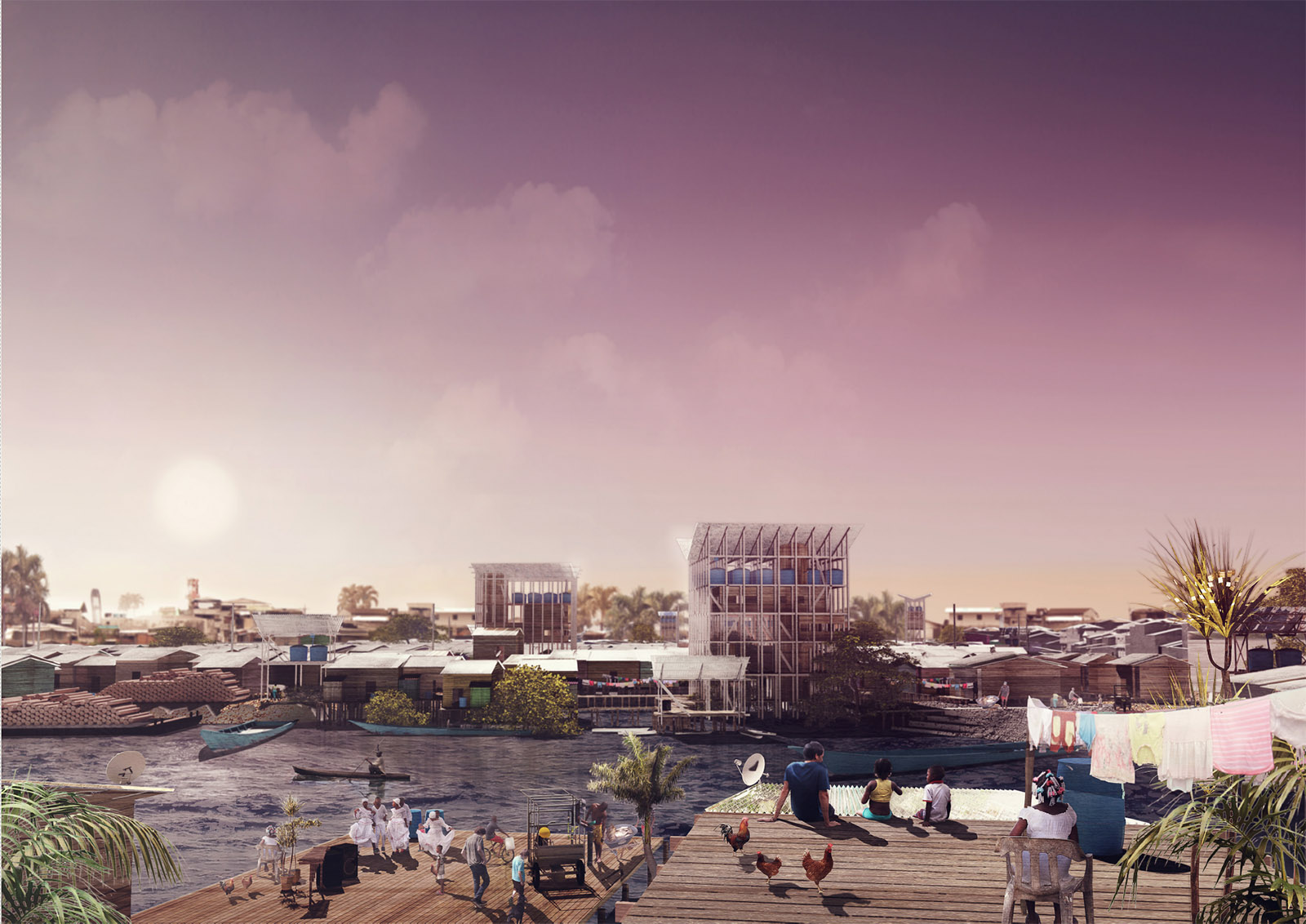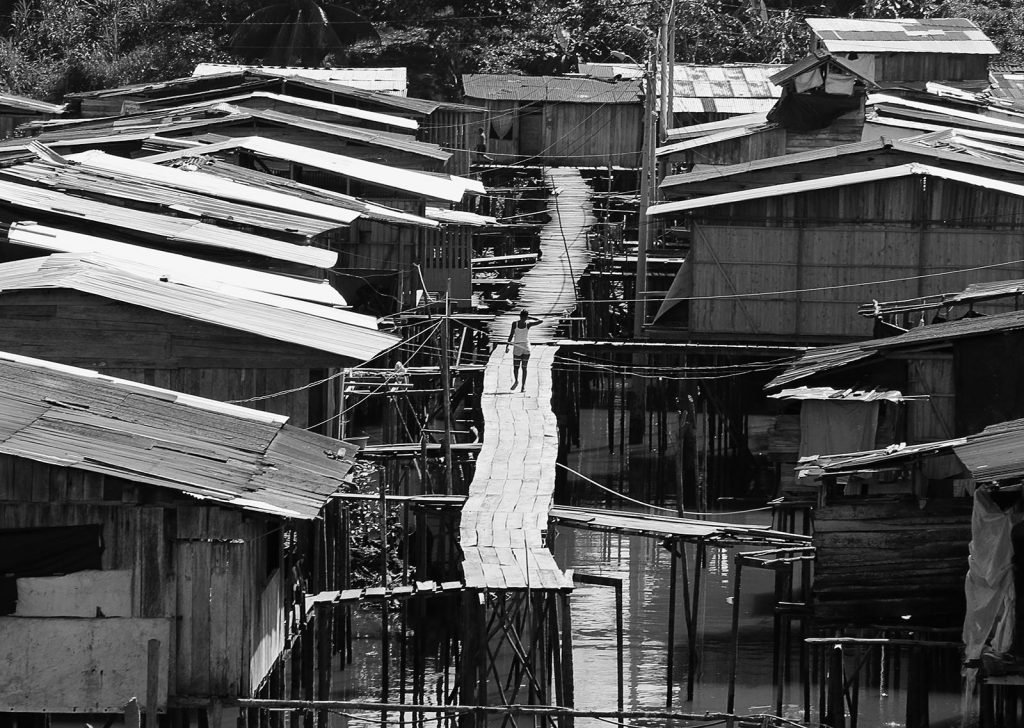Sovereignty on Stilts: Drawing a Genealogy of Extra-Territorial Urbanization along the Mudflats of the Tropical Belt

by Gabriel Muñoz Moreno (MDes ’17) and Santiago Serna Gonzalez (MDes ’17)—Recipient of the Project Prize in Design Studies
“Self-constructed cities, commonly referred to as informal settlements, are the product of culturally driven individual and communal initiatives. Informal settlements evolve without prescribed planning, design, or legal guidelines. Self-constructed cities are a dynamic form of urbanization in constant transformation, rich in diverse socio-economic relationships and physical morphology and with a unique ability to adapt to local conditions.”
—Gouverneur, David. Planning and Design for Future Informal Settlements. Oxon: Routledge, 2015.
The emergence of cities is directly proportional to the resources available for them to sustain a certain population, labor being a necessary asset to do so. What if a resource flux of a given region is vulnerable or scarce? Then, the quest for supplies happens in foreign territories, producing conflicts such as war, colonization, slavery, power imposition or native community displacement, losing essential cultural knowledge, driving the meaning of urbanism and development toward an unquestionable understanding – Koolhaas’ Generic City:
“The Generic City presents the final death of planning. (…) planning makes no difference whatsoever. Buildings may be placed well (a tower near a metro station) or badly (whole centers miles away from any road). They flourish/perish unpredictably.”
“Sovereignty on Stilts” exemplifies this phenomenon by showing how the displacement of native communities in Latin-American Pacific coasts has occurred for centuries – from the Atlantic Slave Trade to the current commercial pressures. Furthermore, vernacular culture, rich in solutions for challenges of sustainability and resiliency in the modern city, is hindered from reaching international acclaim by its poor representation in public media.

To understand the native lifestyle, we traveled to the Pacific Coast of Colombia, and Ecuador, visiting the stilt neighborhoods of Buenaventura and Guayaquil, where we witnessed the literal creation of firm land by communities in otherwise flood-prone swamps. The state claims this land by proposing developments without contextual and cultural comprehension, recalling the conquista through processes of lifestyle imposition, and indirect slavery. To unveil the reality and value of these communities – prevalent across the tropical belt, “Sovereignty on Stilts” proposes a displacement of the definition of poverty, countering that of what western institutions, the UN and World Bank, offer nowadays.